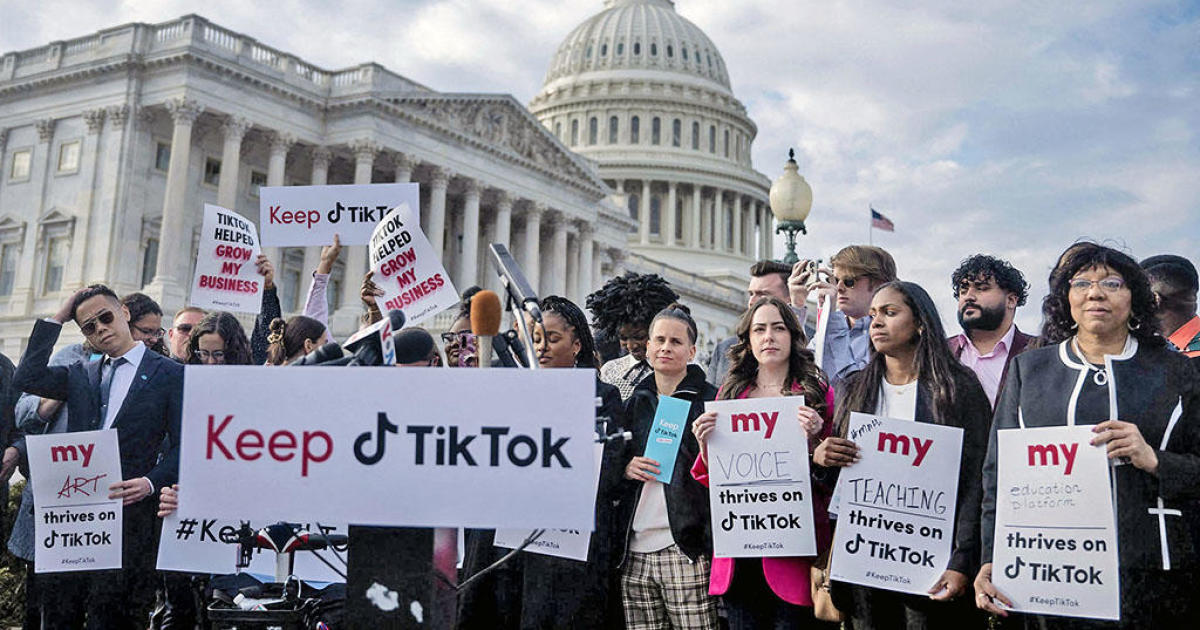A big beneficiary of the $1.9 trillion aid bill: Working-class and middle-class households
The American Rescue Plan signed into law on Thursday by President Joe Biden will unlock $1.9 trillion of federal spending with the goal of helping the U.S. economy back on its feet from the pandemic. A top priority: getting cash and other support directly into the pockets of low- and middle-income households.
More than $940 billion of the relief aid — about half of overall spending under the measure — will end up in the hands of tens of millions of households, with all but the highest-earning Americans in line to receive aid such as $1,400 direct checks, expanded child tax credits and bigger food-stamp payments. About 70% of the tax benefits from the American Rescue Plan will aid families earning less than $91,000, compared with the Tax Cuts and Jobs Act, which directed almost half of its tax cuts to the top 5% of households, or those earning more than $300,000, the Tax Policy Center said.
To be sure, direct payments to people have played a part in the government's previous stimulus rounds. But earlier spending tended to prioritize shoring up businesses, such as the $660 billion Paycheck Protection Program, which was credited with helping restaurants and other small businesses stay afloat when the pandemic shuttered the economy a year ago.
Getting money directly into consumers' hands should bolster household finances and boost spending, which will contribute to projected economic growth of 4.7% this year and 5% in 2022, Moody's Investor Service said in a research report. Indirect aid, such as $210 billion that will be spent on public schools to help them resume in-person learning, will also aid households by allowing parents who cut back on work to resume full employment.
But key to the efforts is aiming the direct spending at low- and middle-income households that have suffered higher rates of unemployment and income loss than wealthier families during the coronavirus outbreak.
"We have a lot of evidence though the pandemic — and evidence is still coming in — but it's definitely more lower-income households that are less likely to work from home and more impacted," Kathleen McKiernan, assistant professor of economics at Vanderbilt University, told CBS MoneyWatch.
Some research indicates that upper-income Americans who got stimulus money were more likely to save it rather than spend it on necessities like groceries and rent. Because the goal of the stimulus payments is to both help struggling households stay afloat while revving up the economy by boosting consumer spending, some economists had argued for lower income limits on the checks — which the American Rescue Plan put into place.
The new bill "is cutting that threshold down in an effort to target the households that really need them and actually use them," McKiernan said, referring to the lower income thresholds for the third stimulus checks, which will direct $1,400 to each eligible adult and dependent.
In signing the bill, Mr. Biden emphasized its goal of helping working- and middle-class households. "This historic legislation is about rebuilding the backbone of this country and giving people in this nation — working people and middle-class folks, the people who built the country — a fighting chance," he said.
Third stimulus check
The biggest slice of spending will go toward a third round of stimulus checks, for a total of $422 billion, according to Moody's Investor Service. Most U.S. households will receive a check, with single people earning less than $75,000 and married couples earning up to $150,000 qualifying for the full $1,400.
People who earn above those thresholds will receive less, until the payments cut off entirely for single people earning more than $80,000 and married people with incomes over $160,000.
Financial hardship continues to be widespread, but is centered among low-income households and people of color. About 22 million adults — more than 1 in 10 — reported that their household sometimes or often didn't have enough to eat the end of February, a rate that is more than three times higher than before the pandemic, according to an analysis from the Center of Budget and Policy Priorities.
More than half of consumers surveyed in January didn't believe the second round of stimulus checks, which provided $600 per adult and dependent, would sustain them for even a month, Mark Hamrick, senior economic analyst at Bankrate, said in an emailed statement.
Extended unemployment aid
The stimulus package extends extra $300 weekly unemployment payments to the nearly 20 million adults who are currently collecting jobless aid, according to Andrew Stettner, an expert on unemployment with the Century Foundation. The $300 supplement had been set to expire on March 14, incentivizing lawmakers to pass the bill before that deadline.
The American Rescue Plan extends the additional jobless aid through September 6, when economists are hopeful the labor market will be in better shape than it is now.
Overall spending for the additional jobless aid is set at $246 billion, representing the third-largest part of the spending plan, following the stimulus checks and the $350 billion directed to state and local governments —which also are major employers of working- and middle-class Americans.
The bill also waives taxes on up to $10,200 of 2020 jobless benefits, which will help workers who lost employment last year and might face surprise tax bills on their benefits when they file their tax returns in the current tax season.
Child Tax Credit, EITC
Low- and middle-income households will also benefit from the expansion of two tax credits, the Child Tax Credit and the Earned Income Tax Credit. The former is geared to families with children, while the latter is aimed at low-income households.
The American Rescue Plan overhauls the CTC by expanding the benefit from $2,000 annually to as much as $3,600 per child. It also includes more low-income households and doles out the credit's benefit through monthly cash payments. But the expansion will be limited to households with the same income thresholds as the stimulus checks, at $75,000 for single people and $150,000 for married couples.
The EITC will be expanded by making it available to people without children in 2021, while the maximum benefit for workers without children will increase from about $540 to $1,500.
Rental and homeowner assistance
The bill provides more than $30 billion to help low-income households pay their rent and to assist the homeless. Some of these programs provide vouchers and other payment programs that are administered by various government agencies.
For instance, the American Rescue Plan includes emergency aid for low-income renters through a program called the Housing Choice Voucher, which provides partial rent payments for people who lost income or are experiencing hardship due to the pandemic. States and tribes will also receive an additional $10 billion for homeowners who are struggling with mortgage payments and other housing costs because of the pandemic.
Food stamp expansion
About $17 billion will be directed to expanding food aid through enhanced food-stamp benefits and programs to feed children.
Maximum benefits through the Supplemental Nutritional Assistance Program (SNAP), which is the formal name of the food-stamp program, will be boosted by 15% through September 30, or an additional $28 per person per month, while $5 billion will be invested in a program called Pandemic-EBT that is aimed at low-income families with children. The latter program helps children who normally receive school meals but who may not be able to receive them because of the switch to remote schooling.
Health care assistance
The relief bill will direct $73 billion to supporting households pay for health care, primarily by expanding subsidies for Affordable Care Act plans and COBRA, the law that allows workers who lost their jobs to continue paying for their existing health care plans.
The subsidies for ACA plans will cover more middle-class families by removing the cap that makes families with incomes that are 400% above of the federal poverty level ineligible for subsidies, according to a statement from Representative Sean Casten of Illinois.
Although the sweetened subsidies last only through the end of 2022, they will lower the cost of coverage and are expected to boost the number of people enrolled.
The measure also dangles more federal money in front of a dozen states, mainly in the South, that have not yet taken up the Medicaid expansion that is available under the ACA to cover more low-income adults. Whether such a sweetener would be enough to start wearing down longstanding Republican opposition to Medicaid expansion is uncertain.
The bill also provides an 85% subsidy until September 30 for people who lost their job and continued on their employer-based health care through COBRA, Casten noted. Previously, workers on COBRA paid the full cost of their health care coverage, including the employer contribution. That was often "prohibitive," Casten added.
With reporting by the Associated Press.



